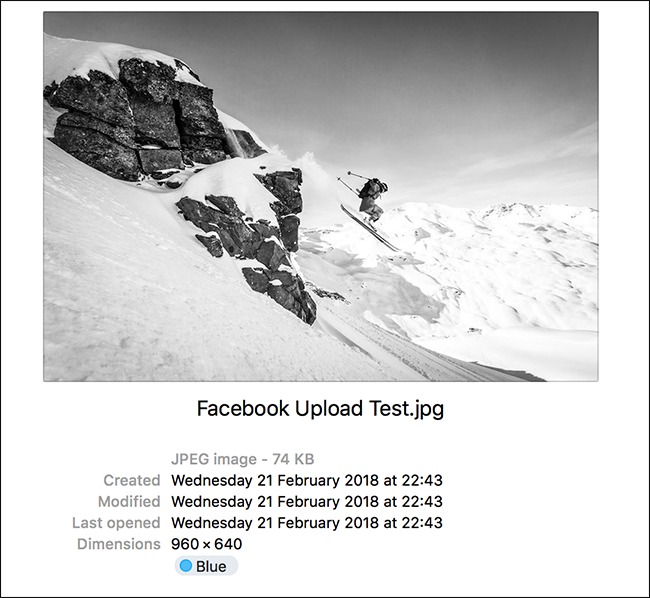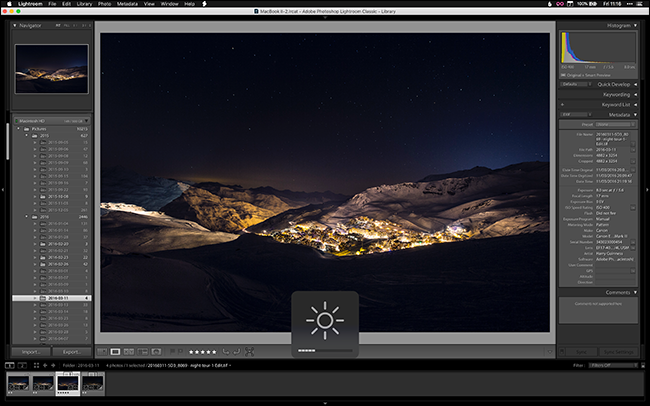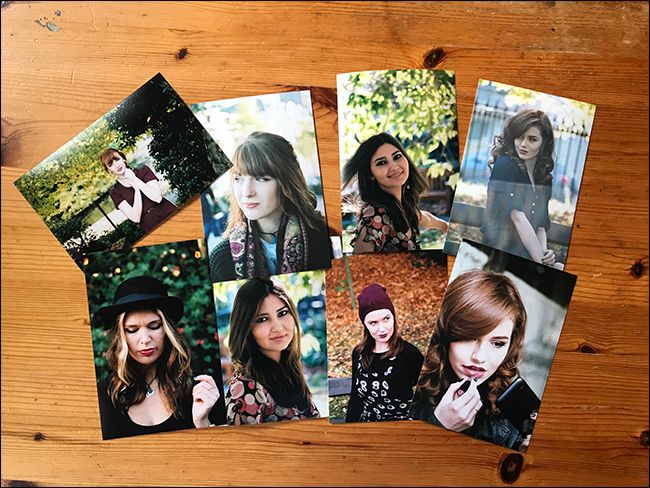Quick Links
If you've ever tried to print photos from your computer, there's a good chance you've been surprised---if not, disappointed---by how they came out. Let's look at where you might be going wrong and why photos often look different when you print them.
What Photos Are You Printing?
The first place you might be going wrong is with the very photos you're trying to print. To get good results you need to use high resolution, original files. The photos that come straight off your smartphone are fine, but the versions you've uploaded to Facebook or Instagram aren't---social media sites compress and downsize images aggressively.
In my test where I uploaded a high resolution, 2.7MB, 5166x3444-pixel file to Facebook and then saved it from my Timeline, I ended up with a 74kb, 960x640-pixel file. That file has just 2.7% of the original image data. It barely looks good on my screen, so there's no way it's going to look good printed. Or at least, printed at any size bigger than 3" by 2".
If you want to print a photo that someone has tagged you in on social media, your best bet is to reach out to them and ask them to send you the high resolution original. If you took the photo, get the original from your phone or camera and print it---not the version you uploaded to Facebook. It's the only way to get a good print.
How Bright Is Your Screen?
One really common problem with printed images is that, compared to the photo on screen, they look really drab and dark. This is because screens and printed images are fundamentally different things: a screen displays images by directly emitting light while a print reflects the ambient light.
Since a screen is itself a light source, images almost always look much brighter with more vivid colors on screen than they do when they're printed. Most people have the brightness and saturation cranked up way too high. You have to remember that your screen is only displaying the underlying image data: if your screen is bright it makes the image appear bright but it doesn't necessarily mean the image is bright in the original file.
Converting what you see on screen to a print is one of the big challenges of high quality photo printing. It takes time and learning from your mistakes to get good at it. I'm still awful at it. A few things you can do are:
- Calibrate your monitor for more accurate colors.
- Turn your screen brightness way down.
- Use the histogram while you edit to have a better idea what your shadows and highlights are like.
What's Your Printer Setup Like?
Even if you've got everything setup perfectly on your computer, if your printer isn't up to the job you're still not going to get great prints. Most standard inkjet or laser printers just aren't designed for printing high quality photos. They're alright if you want to print off some Powerpoint slides but not if you want something you can actually put on your wall.
The first step is to get a printer that's actually up to the job. Our sister site ReviewGeek has a great roundup of photo printers for any budget. Next, you'll need high quality photo paper---it does make a difference. The final step is to make sure your printer is set up correctly with the right drivers and color profiles.
If all that sounds a bit much, then you can get your photos printed professionally, which we'll look at next.
Who's Doing the Printing?
"Professional" printing is a pretty big category and runs the gamut from terrible to incredible. At the lower end, you've got bad shops that will just print any file you hand them for a few dollars. At the high end, you've got master craftsmen who'll print, frame, and mount a five-foot panorama for a few hundred dollars. As I said, the range is wide.
If you've got your photos printed by someone towards the lower end of the range, or using a drugstore machine, then it's normal to expect the prints to come back a little off. The thing to do is look at the prints, assess what's wrong with them, and then make the edits to the original files and get them printed again. If the photos are too dark, increase the brightness. If they look yellow, fix the white balance. Keep doing this until you get photos that look how you want. It might take a few goes but, since it's cheap, you won't break the bank.
On the other hand, if you're going with a high-end printing shop, just talk to them; they're the experts. Ask them to review your file and to make a smaller test print. They'll normally be more than happy to help.
The best middle ground is to go to a camera shop that also prints photos. The staff will be knowledgeable and happy to help or offer advice.
How to Get Better Prints
So that's some of the common ways the printing process breaks down and doesn't give you the results you want. To dodge all the pitfalls:
- Use high-quality original files.
- Make sure your monitor isn't too bright or too saturated.
- If you're serious, calibrate your monitor.
- Edit your images using the histogram.
- Get a good printer or use a professional.
- Do test prints and then fix any problems.




